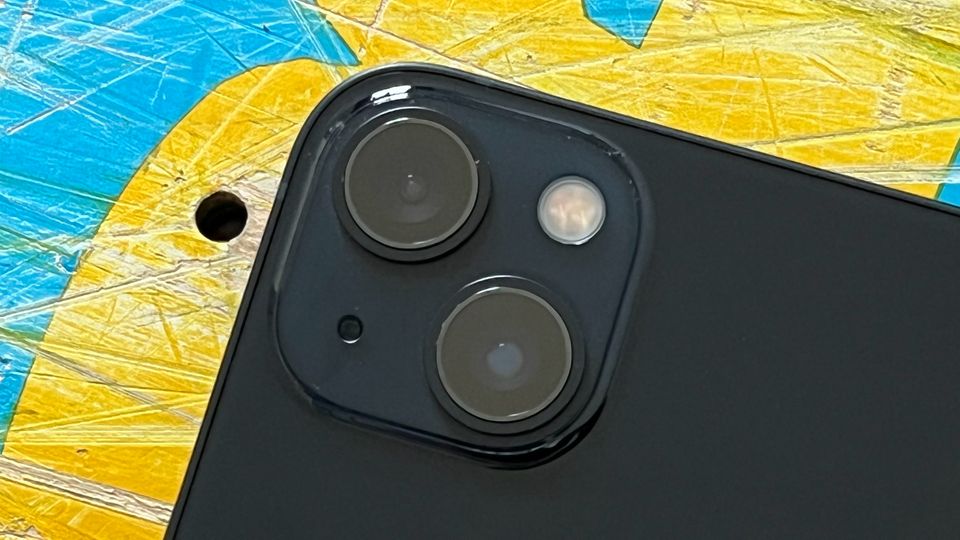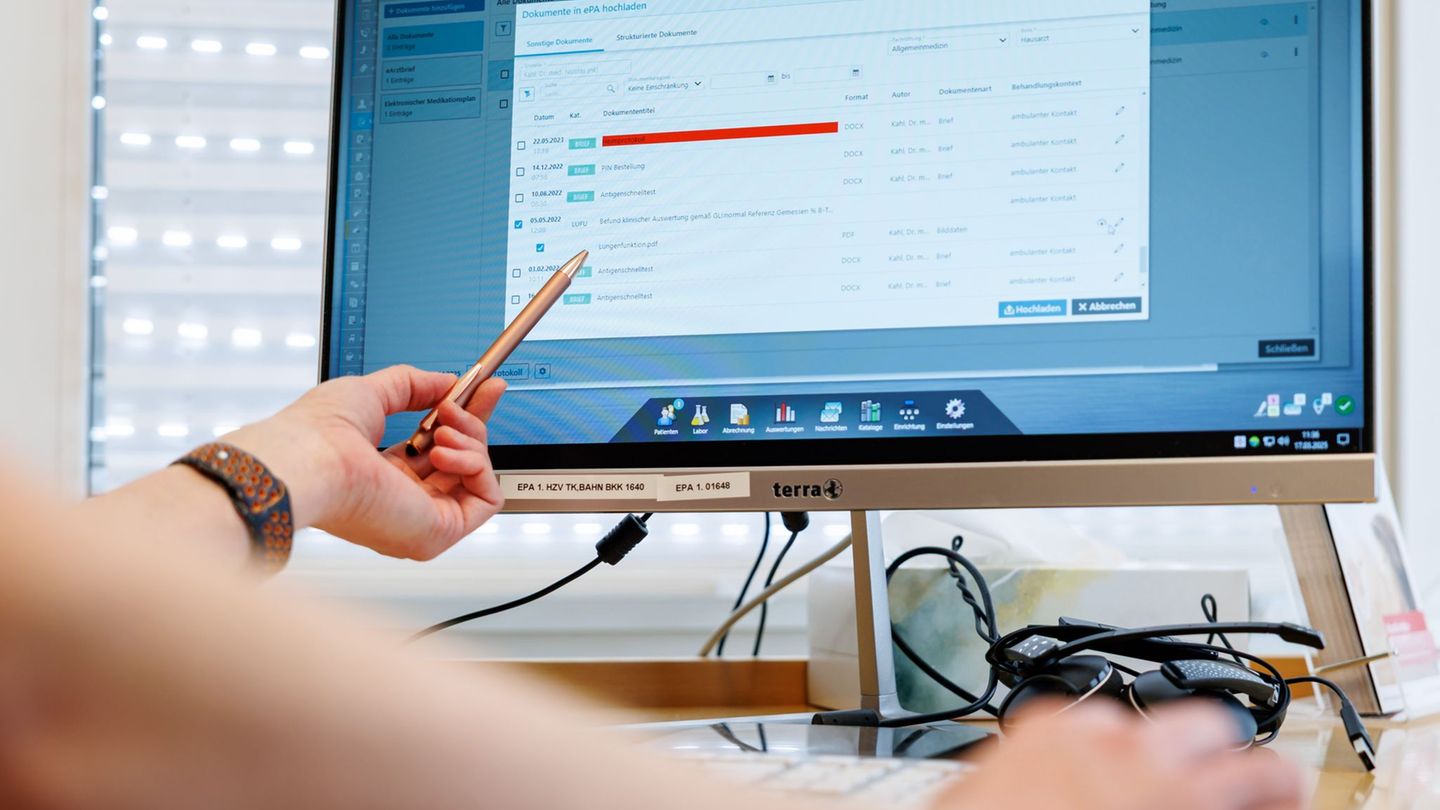With the iPhone 13, Apple is bringing all of the Pro functions of last year into the entry-level device and adding a shovel. Our test reveals whether the purchase is worthwhile – and who should prefer the Pro.
A new year, a new iPhone: After the stylish redesign of the iPhone 12, Apple is bringing out the successor in almost the same look, relying on technical upgrades to convince customers. It would actually be a classic “S” year. But instead of a 12, there is a full one today on the market. Our test reveals why it’s actually only an S in wolf’s clothing – and still the best basic iPhone in a long time.
Visually, the differences to the iPhone 12 are small. The display diagonal remains at 6.1 inches, the bulge for the front camera and Face ID, called notch, has become slightly narrower. The camera lenses on the back are slightly larger, they are now arranged diagonally instead of one below the other. The device has become slightly thicker. That was largely it, at least in terms of optics.
iPhone 13 in the test: known on the outside, new on the inside
The fact that Apple hardly changes the design of its predecessor is neither surprising nor dramatic: the iPhone 13 still feels great and still looks modern with its angular look. If you value it, you can still optically set yourself apart from the 12er. Especially if you choose one of the new colors rosé, blue or stardust, a kind of creamy white. The innovations are primarily to be found inside. And on the back, because the cameras have also been upgraded. But more on that later.
The main innovations of the iPhone 13 at a glance:
- New A15 processor
- More battery life
- Revised camera
- More memory in the entry-level model
Technically, the iPhone 13 has been improved in every important way. Starting with the new A15 processor. As usual, this brings another leap in performance compared to the previous year’s model. The iPhone 13 is almost 15 percent faster in so-called benchmark programs, with which the performance of the chip can be measured. The iPhone 13 and the but not retrieve: While the two Pro models have five cores in the graphics unit (GPU) built into the chip, the two cheaper models only have four. The difference is measurable: The jump in the graphics calculation, which is important for games, falls in the one we also tested significantly larger: it is almost 60 percent. The iPhone 13, on the other hand, showed just 17 percent more graphics performance than the iPhone 12.
In everyday life, however, it doesn’t make a noticeable difference: The iPhone 13 is not noticeably slower than the iPhone 13 Pro Max for games or intensive calculations such as the new cinema mode. Those who do not value every frame when gaming, use or plan intensively augmented reality to use the devices for more than three years should not only choose the Pro because of the better graphics chip.

The iPhone 13’s camera: strong, but not great
The camera is more suitable as a reason. Because: Although the camera of the iPhone 13 is an improvement in almost every respect compared to its predecessor, it is clearly outclassed by the Pro. You can find a comparison in the photo gallery. But that doesn’t mean that the iPhone 13 has to hide in photos and videos – on the contrary.
Because even with the entry-level models, Apple has greatly improved the camera, just to a lesser extent than the Pro. The iPhone 13 and the iPhone 13 Mini have now inherited the significantly larger image sensor, which was exclusive to the last time was reserved. The image stabilization technology, dubbed Sensor-Shift, also finds its way from the 12 Pro Max to the basic model. In addition to the lenses, the image sensor is also mechanically moved to compensate for wobble. Together with the slightly enlarged aperture, this means that both the wide-angle and ultra-wide-angle cameras installed as the main camera deliver significantly better images than last year.
The cameras of the iPhone 13 (and iPhone 13 Mini) at a glance:
- 12 megapixel (MP) wide-angle camera with f1.6 aperture
- 12 MP ultra wide angle with f2.4 aperture and 120 ° field of view
- Sensor shift optical image stabilization (only in wide angle)
- New cinema mode
Clearly better camera
The improvements are noticeable, although not in every situation. If the light is good, the differences to the predecessor are negligible, the pictures are excellent as usual and score with very sharp details and great color representation. This changes quickly in poor lighting conditions. The iPhone 13 can capture more details here, and the optical image stabilization makes it much easier to take free handheld photos without the risk of annoying shake. If the iPhone 13 Pro weren’t even better – with the exception of the missing zoom, there would be little to criticize about the photo quality of the iPhone 13.
What’s your style
All new iPhones share an innovation in photos anyway: If you want, you can set a preferred style for photos, for example with particularly high or low contrast or with more or less warmth in the picture. This style is then retained for all recordings until you manually change it yourself. In contrast to filters, the change is applied directly during the recording, which means that sharing with the RAW mode is not possible. Nevertheless, the images can be edited afterwards as usual.
When you first open the camera app, it offers four styles suggested by Apple, but you can switch at any time. And: If you want, you can also set the two values used for styles – warmth and contrast – individually.
Cinema in your pocket
The situation is very similar with video. Here, too, Apple has dared to take a surprising step – and implemented the new cinema mode for all models. It is supposed to provide a particularly cinematic effect through depth of field, for example by seeing a person in focus while the background or other people are out of focus. Just like you know it from film cameras. The specialty: Although the iPhone automatically sets the focus and can switch back and forth between speaking people, I keep control myself – and can also move the focus myself during post-processing. Great: The computing power of the A15 allows the focus to be shifted in real time during processing.

In practice, however, the blurring function works rather mixed and unfortunately does not work as well as in the professional recordings from Apple’s promo clips. On the one hand, the area in which the focus change works is still very small: It works best for people who are close to the camera. If the people are too far away, there is no effect. This means that the blurring only sets in later when you approach people. A strange look. Also, blurring the foreground and focusing on the background did not work properly during the test. If you know about the restrictions, you can achieve nice results with the mode and have fun. Since this is a software-only feature, Apple may be able to fix the issues in the future.
You shouldn’t get angry about the mode anyway: It’s just a kind of bonus feature for the otherwise very good video camera of the iPhone 13. If you are dissatisfied with the blurring results, you can simply leave them out and prefer to enjoy the otherwise very good video recordings . You can find sample videos, including those from cinema mode, in the embedded video clip.
Endurance runner
The fact that you can now enjoy them even longer is due to the next innovation, which is almost the most important for many smartphone users: the greatly improved battery performance. Apple has increased the battery itself by almost 15 percent – which is probably the reason for the slightly thicker case – and the A15 should also help save electricity. The effect is noticeable: the iPhone 13 lasts the whole day even with intensive use, for example through movies or games, everyday life consists mainly of lighter tasks, and a second day should be more often in it. The effect is noticeable when watching videos: Even with full brightness, one hour of Netflix only lowers the charge level by nine percent, so with a less festively lit display, well over ten hours of continuous video are possible.
A small update may seem unspectacular, but it deserves a mention: With 128 GB, even the cheapest model now has twice as much memory as its predecessor. Because Apple has kept the prices of last year and the upgrade to the same amount of memory on the iPhone 12 still cost 50 euros, the new iPhones are de facto even cheaper.
More environmentally friendly
One final point that could influence the purchasing decision is the environment. Apple is putting a lot of emphasis on how much more environmentally friendly the new iPhones are to make and pack. The carbon footprint in the production of the new iPhones is said to have fallen by ten percent, and the rare earths used in the magnets of the Magsafe system come from 100 percent recycled material. Apple also uses recycling when it comes to packaging. However, the environmental awareness also has an effect on the customer: As with the predecessor, the iPhone 13 models no longer come with power supplies, both models only have a USB-C cable to Apple’s Lightning connector. But if you have an old power supply, you can use it without any problems.
Conclusion: Better in every (important) way
The iPhone 13 may seem less exciting compared to the chic redesign of its predecessor, but it’s still a really successful update. With the new A15 processor, the revised camera and the improved battery performance, Apple offers sensible revisions that make the device better in every respect relevant to the user. It is also to be gotten over the fact that the spectacular sounding cinema mode unfortunately falls a little below expectations in everyday life.
All in all, Apple succeeds in delivering an attractive standard model with useful innovations. If you want more – for example with the camera or the powerful new display – you have to grab the iPhone 13 Pro or Pro Max.
Do you have to upgrade now? If you already have an iPhone 12, you should only consider it if you really want to have the extra battery or the cinema mode. It looks different with iPhone 11 and older: Due to the larger basic memory, the iPhone 13 is hardly more expensive than the iPhone 12 with 128 GB of memory. And for the extra charge you get a lot on offer. If you are not entirely sure of getting along with the 64 GB model of the 12 series, you should therefore think about paying the extra charge.
The iPhone 13 will be available from September 24th and will cost from 899 euros.
David William is a talented author who has made a name for himself in the world of writing. He is a professional author who writes on a wide range of topics, from general interest to opinion news. David is currently working as a writer at 24 hours worlds where he brings his unique perspective and in-depth research to his articles, making them both informative and engaging.




